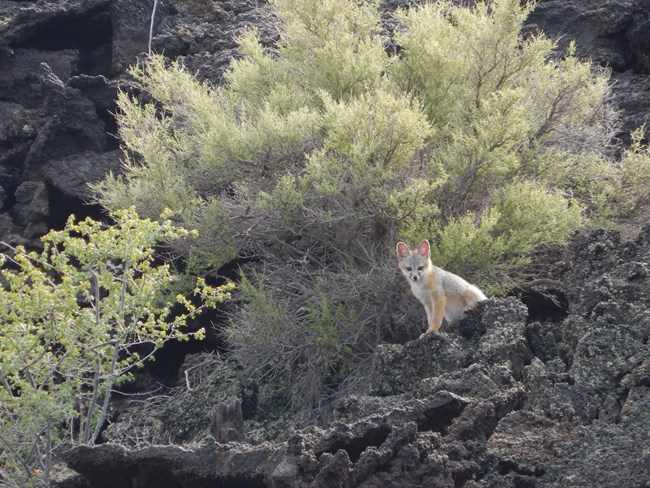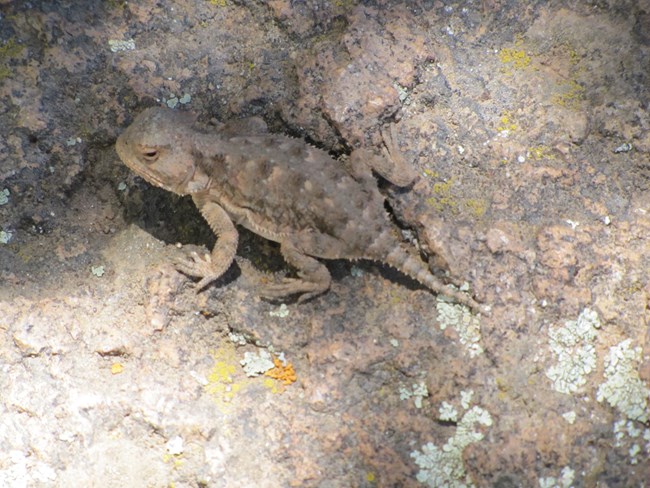
NPS / L. Carter Today, lava tubes and cracks in the lava flows are home to insects, spiders, lizards, and rodents. Bats inhabit some of these spaces, flying out to feed at night. Birds fly overhead, including Steller's jays, pinyon jays, black-chinned hummingbirds, white-breasted nuthatches, ravens and crows, hawks, and occasionally golden eagles. Almost a thousand years later, this is still a tough place to survive. Vegetation is sparse, and surface water is practically nonexistent. The Bonito lava flow is extremely inhospitable, and animals are rarely seen there. The surrounding pine forests provide habitat for mule deer, elk, pronghorn, bobcats, coyotes, Aberts squirrels, cottontails, and porcupines. |
BirdsSunset Crater Volcano is surrounded by ponderosa and pinyon pines, aspens, junipers, open meadows, and barren cinder and lava fields. This variety of landscapes creates numerous home for a surprising array of bird species. The Coconino National Forest has a bird list for the area. One of the showiest and most common birds in the monument is the Steller's jay, a raucous member of the corvid family. Look for a large, blue bird with a black head, prominent crest, and white eyebrow markings. 
NPS/C. Griffing MammalsFrom pronghorns to porcupines, pausing awhile at Sunset Crater Volcano can reveal some of North America's most majestic mammals. Many of these are often seen early in the morning or late in the afternoon, when the sun is low on the horizon. A stop at the visitor center often reveals one or more Aberts squirrels with tassel-tipped ears, gray fur, and a reddish stripe from nape to tail. Prairie dogs stand sentinel along the road through Bonito Meadow. Chipmunks forage in the grasses near the volcano and lava flow. The monument's large herbivores include American pronghorn, elk, and mule deer. Rarely seen carnivores include mountain lions, bobcats, and coyotes. Please do not feed wildlife—interacting with humans is bad for them. Observe all speed limits throughout the scenic loop road to minimize wildlife collisions. 
NPS/Rick Ruess Reptiles
Visitors often notice that lizards on the lava and cinder fields are black. Genetic mutations causing black scales give darker lizards an advantage: lighter lizards are more easily seen by airborne predators like hawks. Over time, predators have removed light-colored lizards from the local gene pool, while darker lizards have survived to pass their traits to the next generation. Select a Park:Select a Species Category (optional):
Search results will be displayed here.
|
Last updated: March 9, 2024
